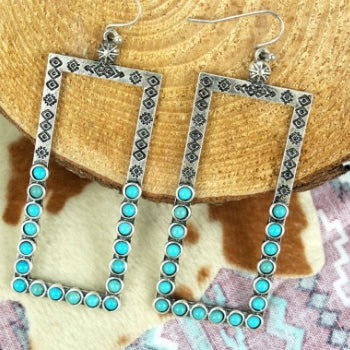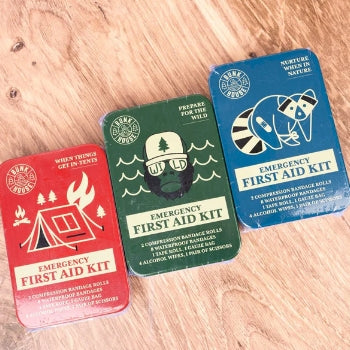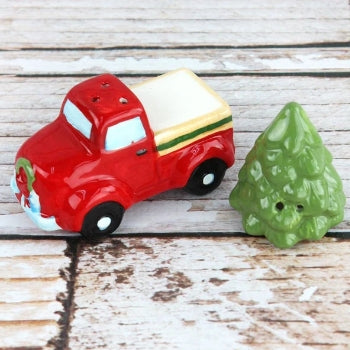Boutique Pricing: Understand Your Costs
Starting a small business or boutique is an exciting journey. Whether you're selling handcrafted jewelry, curated fashion pieces or unique gadgets, there's a thrill in watching your passion come alive. But passion, while vital, isn't the only ingredient to success. One of the primary elements in creating a boutique pricing formula is understanding your costs. Let's dig in:
- Variable Costs: These are the costs that ebb and flow with your business activities. Think of the materials you buy to craft your products or the commission you pay salespeople. As you produce or sell more, these costs go up and vice versa. Having a clear grasp on these is essential because they directly impact how much you spend per item.
- Fixed Costs: Unlike variable costs, these don't change, no matter how much or little you produce. Fixed costs could be the rent for your boutique space, monthly utility bills or the salary of a permanent employee. It's crucial to factor these in because, well, they're inevitable.
- Total Cost: Here's a simple math trick – add up your variable and fixed costs and divide by the number of items you're planning to sell. This gives you an idea of how much it costs to produce one item. It's your baseline, the bare minimum you need to cover expenses.
Summary: When you know the ins and outs of your expenses, you're better equipped to set a price that covers these costs and ensures you turn a profit. After all, turning a profit is what keeps the lights on and the dream alive. So, roll up those sleeves and dive into your cost analysis. The clearer picture you have, the closer you are to pricing a product to perfection.
Know Your Market: Competitive Boutique Pricing
The saying "knowledge is power" has never been more apt. When pricing a product, knowing your market is that secret superpower you didn't know you had. Here are some key factors you should be looking at when creating a pricing formula for your boutique or small business:
- Competitive Analysis: Before you pin down that price tag, take a look around. What are others charging for similar items? Maybe your handmade scarves have a little extra flair or your tech gadgets come with a unique feature. However, understanding the ballpark price range in your market can help you find that sweet spot where your price is both competitive and profitable.
- Target Audience: Let's chat about your customers. Who are they? What do they value? They might be all about sustainable products or they prioritize luxury. Understanding the heartbeat of your audience – their preferences, needs and budget – can guide you in setting a price they'll happily nod to.
- Perceived Value: This one's a bit of magic and logic mixed together. It's not just about the actual cost of your product but how much your customers feel it's worth. For instance, a unique artwork might have material costs of $50, but the creativity, effort and emotion infused might make it priceless in a collector's eyes. Gauge your product's emotional and practical value, and let that inform your boutique pricing formula.
Summary: Getting cozy with your market isn't just about spying on the competition or playing guess-the-customer's-thoughts. It's about weaving a strong connection between your products and those you serve. When you're in tune with your market, pricing becomes less of a guessing game and more of a strategic dance. And who knows? You may become the go-to spot for customers looking for that perfect blend of quality, value and price!

Choose a Boutique Pricing Strategy
Alright, let's talk strategy. Setting the right boutique pricing for small businesses isn't just about intuition or copying what others are doing. It's about picking a strategy that aligns with your business goals and values. Let's break down some of the popular pricing plays out there:
- Cost-Plus Pricing: This is the straightforward friend in the pricing world. You simply take the cost of producing your item and add a specific markup. The average markup for retail products depends on the category. For example, jewelry typically has a markup of 50%, so if a pair of earrings costs you $10 at wholesale and you want a 50% profit margin, you'd sell them for $15.
- Value-Based Pricing: This strategy listens to the heartbeat of your customers. Instead of just focusing on costs, you're looking at the value your product brings to the table. If your line of beauty products makes customers feel like they've had a spa day every morning, you might be able to charge a bit more.
- Competitive Pricing: Here, you're eyeing the competition. If everyone's selling handcrafted mugs for $15, pricing yours at $30 might be a stretch unless there's a unique value proposition. On the flip side, if your mugs have a special feature or design and you undercut your price, you might be selling yourself short.
- Penetration Pricing: This is the "come on in!" strategy. Initially, you set a lower price to woo customers and grab some market share. Once they're hooked and your brand's got some recognition, you adjust prices upward. It's a bold move that's super effective if played right.
- Premium Boutique Pricing: Is your product the crème de la crème? This strategy is for products that scream luxury or have a unique offering that's unparalleled in the market. If you're bringing something exceptional and your target audience values that exclusivity, this might be your jam.
Summary: Selecting the right strategy is like choosing the perfect outfit — it has to match your brand's personality, resonate with your customers and feel just right. Remember, it's okay to tweak and pivot as you learn more about your market. After all, pricing, like fashion, is both an art and a science. So, embrace the journey and pick the strategy that lets your business shine.

Consider Psychological Pricing
Okay, entrepreneurs, let's don a different hat for a moment. Did you know that how we perceive prices often goes beyond logic and taps into feelings and perceptions? Welcome to the mesmerizing world of psychological pricing. Here's how you can put this pricing to work in your boutique or small business:
- Charm Pricing: Ever wondered why prices often end in .99 or .95 instead of rounding up? That's charm pricing at work. A product priced at $9.99 feels like a better deal than one at $10, even though the difference is just a penny. Our brains see that first number and think "Ah, it's in the 9s, not 10s!"
- Bundle Pricing: "Buy these together and save!" Sound familiar? Bundling products together and offering a discount creates a sense of value. Plus, it's a great way to introduce customers to new products they might not have tried otherwise.
- Price Anchoring: This is about setting a reference point. By first showing a higher "original" price next to a discounted "sale" price, customers perceive they're getting a bargain, even if the sale price was your target all along. Remember, however, that the Federal Trade Commission (FTC) has specific pricing guidelines. For example, you must offer your product at the original price for a period of time before you're permitted to advertise it at a sale price.
- Odd Pricing: While charm pricing deals with .99 or .95, odd pricing takes it a step further. Boutique pricing like $14.87 or $52.43 can give the impression of a precise, carefully calculated cost, making customers believe they're getting the best possible deal.
- The "Free" Effect: Never underestimate the allure of "free." Offering something for free, even if it means slightly increasing the price of the main product, can be a powerful motivator. Think about a home décor product, for instance, such as "Buy a coffee cup and get a free coaster."
Summary: Psychological pricing isn't about tricking customers but understanding how our minds process value and making pricing decisions that resonate. It's a dance between perception and reality, and when done right, it can turn window shoppers into loyal patrons.

Account for External Factors
While crunching numbers and understanding our customers is super crucial, let's not forget the big picture – the world outside our boutique or small business. Sometimes, factors beyond our immediate control can and will impact how to price a product. Let's explore some of these external influences:
- Economic Climate: Whether it's a booming economy or a bit of a downturn, the economic environment can sway customers' spending habits. In tougher times, luxury items need a more strategic approach, while essentials enjoy steady sales.
- Seasonal Trends: Ah, the dance of the seasons! Winter is prime time for those cozy knit scarves, while summer screams for breezy dresses. Recognize the peaks and valleys of demand and adjust boutique pricing accordingly.
- Regulations and Tariffs: Sometimes, governments change the rules. This can mean new taxes, import duties or restrictions that affect your cost structure. Stay informed, and be ready to adapt your prices if needed.
- Supply Chain Disruptions: Global events, from pandemics to natural disasters, can throw a wrench in your supply chain. If getting materials becomes more expensive or challenging, this can impact your pricing formula.
- Competitor Movements: Stay alert to the competition. If a significant player slashes prices or introduces a game-changing product, it might be time to rethink your pricing formula to stay in the game.
- Cultural Shifts: Today's world is ever-evolving. A sudden surge in eco-consciousness or a cultural trend can influence what customers value and are willing to pay for. Always have a finger on the pulse of society's shifts.
Summary: It's a vast, interconnected world out there, and even boutiques and small businesses aren't isolated from external factors. The trick? Be adaptable. Keep an eye on the horizon, anticipate changes and be nimble with your boutique pricing decisions. By staying attuned to the world at large, you ensure your business thrives amid the ebb and flow of external influences.

Regularly Review and Adjust Boutique Pricing
Just like fashion trends, our favorite music or even our tastes in food, boutique pricing isn't something you set once and forget. Let's talk about the importance of regular check-ins and fine-tuning when pricing a product.
- Stay Updated with Costs: Whether it's a rise in raw material prices, a new lease agreement or wage hikes, costs can drift over time. Periodic reviews ensure you're always aligned with the reality of your expenses.
- Monitor Sales Data: Are certain products flying off the shelves while others gather dust? Sales data can offer insights into what's working and what's not, prompting potential price adjustments.
- Feedback is Gold: Listen to your customers. Their feedback can offer invaluable insights into the perceived value of your products. If they rave about an item's unmatched quality, there might be room for a price bump. If they're hesitant due to cost, it's worth revisiting your pricing formula.
- Watch the Competition: Keep a friendly eye on fellow businesses. If they're introducing new products or adjusting prices, it could signal you to reassess your strategy.
- Seasonal or Event-Based Reevaluations: Black Friday, end-of-season sales or a local event can be prime times to tweak prices temporarily to maximize sales and attract new customers.
- Embrace Flexibility: The key takeaway? Be flexible. The world is not static, and neither should your prices be. Regular reviews keep you agile, responsive and ahead of the curve.
Summary: Think of pricing a product like steering a ship: it requires constant attention, minor adjustments and sometimes, bigger course corrections. Committing regular reviews ensures your business remains profitable, competitive and in sync with market dynamics. So, set those calendar reminders and make pricing reviews a habit. Your bottom line will thank you.

Wholesale Accessory Market Has the Know-How to Price a Product That Sells
Ready to elevate your boutique or small business? Dive into the treasure trove at Wholesale Accessory Market. By stocking up with WAM, you're not just filling shelves – you're gaining a competitive edge. Our curated range of products offers quality at unbeatable wholesale prices, ensuring you get the best bang for your buck. This pricing advantage means you can offer your customers amazing value while securing those vital profit margins. Discover the Wholesale Accessory Market advantage and let's put your pricing formula to work for you!
Frequently Asked Questions on How to Price a Product
Below are answers to a few questions on how to price a product for small businesses and boutiques. If you'd like to know more about this topic or anything related to our products, please get in touch.
How Does Wholesale Accessory Market Help With My Pricing Strategy?
Wholesale Accessory Market offers products at fantastic wholesale prices. By sourcing from WAM, you can gain a competitive edge, ensuring you can price products in a way that offers great value to customers while maintaining solid profit margins.
What Are the Best Pricing Strategies for a Boutique?
Effective boutique pricing strategies hinge on a few key elements. First, thoroughly understand all your costs, from procurement to overhead. Next, be in tune with your market, gauging what customers are willing to pay and how your products compare to competitors. Implementing psychological pricing, like charm or anchor pricing, can make items more appealing to customers. Additionally, staying flexible by regularly reviewing and adjusting prices as needed ensures you remain competitive and aligned with current market conditions. Remember, the right strategy will strike a balance between attracting customers and maintaining profitability.
How Often Should I Review and Adjust My Pricing Strategy?
Regularly! Ideally, aim for a semi-annual or annual review, but also be prepared to make adjustments if there are significant changes in costs or market conditions – or if you get new feedback or sales data.
How to Price Clothing for a Boutique?
Knowing how to price clothing for a boutique involves understanding your costs (including procurement, overhead and operations), researching the market to gauge what customers are willing to pay and considering perceived value. Factor in wholesale costs (which you can keep to a minimum by shopping for apparel at Wholesale Accessory Market), desired profit margins and any branding or exclusivity elements. It's also smart to monitor competitors' boutique pricing, adjust for seasonal trends and consider psychological pricing tactics. Regular reviews ensure you stay competitive and profitable.
HOW TO PRICE YOUR PRODUCTS | BEGINNER FRIENDLY PRICING STRATEGY FOR ENTREPRENEURS + BOUTIQUE OWNERS
See how one entrepreneur priced her products to scale her business.





